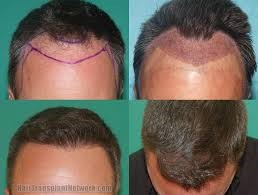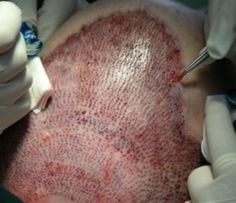Cosmetic Surgery & Plastic Surgery
Cosmetic Surgery & Plastic Surgery
Cosmetic Surgery: Focused on Enhancing Appearance
The procedures, techniques, and principles of cosmetic surgery are entirely focused on enhancing a patient’s appearance. Improving aesthetic appeal, symmetry, and proportion are the key goals. Cosmetic surgery can be performed on all areas of the head, neck, and body. Because the treated areas function properly, cosmetic surgery is elective. Cosmetic surgery is practiced by doctors from a variety of medical fields, including plastic surgeons.
The scope of cosmetic surgery procedures includes:
- Breast Enhancement: Augmentation, Lift, Reduction
- Facial Contouring: Rhinoplasty, Chin, or Cheek Enhancement
- Facial Rejuvenation: Facelift, Eyelid Lift, Neck Lift, Brow Lift
- Body Contouring: Tummy Tuck, Liposuction, Gynecomastia Treatment
- Skin Rejuvenation: Laser Resurfacing, Botox, Filler Treatments

Plastic Surgery: Focused on Repairing Defects to Reconstruct a Normal Function & Appearance
Plastic surgery is defined as a surgical specialty dedicated to reconstruction of facial and body defects due to birth disorders, trauma, burns, and disease. Plastic surgery is intended to correct dysfunctional areas of the body and is reconstructive in nature. While many plastic surgeons choose to complete additional training, and perform cosmetic surgery as well, the basis of their surgical training remains reconstructive plastic surgery.
List of Plastic surgery procedures:
- Breast Reconstruction
- Burn Repair Surgery
- Congenital Defect Repair: Cleft Palate, Extremity Defect Repair
- Lower Extremity Reconstruction
- Hand Surgery
- Scar Revision Surgery

Hair Transplant
It’s a type of surgery that moves hair you already have to fill an area with thin or no hair. Doctors have been doing these transplants in the U.S. since the 1950s, but techniques have changed a lot in recent years.
You usually have the procedure in the doctor’s office. First, the surgeon cleans your scalp and injects medicine to numb the back of your head. Your doctor will choose one of two methods for the transplant: follicular unit strip surgery (FUSS) or follicular unit extraction (FUE).

With FUSS, the surgeon removes a 6- to 10-inch strip of skin from the back of your head. He sets it aside and sews the scalp closed. This area is immediately hidden by the hair around it.
Next, the surgeon’s team divides the strip of removed scalp into 500 to 2,000 tiny grafts, each with an individual hair or just a few hairs. The number and type of graft you get depends on your hair type, quality, color, and the size of the area where you’re getting the transplant.

If you’re getting the FUE procedure, the surgeon’s team will shave the back of your scalp. Then, the doctor will remove hair follicles one by one from there. The area heals with small dots, which your existing hair will cover.
After that point, both procedures are the same. After he prepares the grafts, the surgeon cleans and numbs the area where the hair will go, creates holes or slits with a scalpel or needle, and delicately places each graft in one of the holes. He’ll probably get help from other team members to plant the grafts, too.
Depending on the size of the transplant you’re getting, the process will take about 4 to 8 hours. You might need another procedure later on if you continue to lose hair or decide you want thicker hair.
Expectations and Recovery
After the surgery, your scalp may be very tender. You may need to take pain medications for several days. Your surgeon will have you wear bandages over your scalp for at least a day or two. He may also prescribe an antibiotic or an anti-inflammatory drug for you to take for several days. Most people are able to return to work 2 to 5 days after the operation.
Within 2 to 3 weeks after surgery, the transplanted hair will fall out, but you should start to notice new growth within a few months. Most people will see 60% of new hair growth after 6 to 9 months. Some surgeons prescribe the hair-growing drug minoxidil (Rogaine) to improve hair growth after transplantation, but it’s not clear how well it works.

Aarav Medicare team is ready to look after all your medical emergency needs. We will Take care of your health.
Saurav
Why Aarav Medicare?

Highly Qualified Specialists
Best Specialist Doctors for all the Treatment and Procedures. Get Free Online Consutations.

State Of The Art Facility
Finest Hospitals with all the modern Medical Equipment and Best Patient Care.

